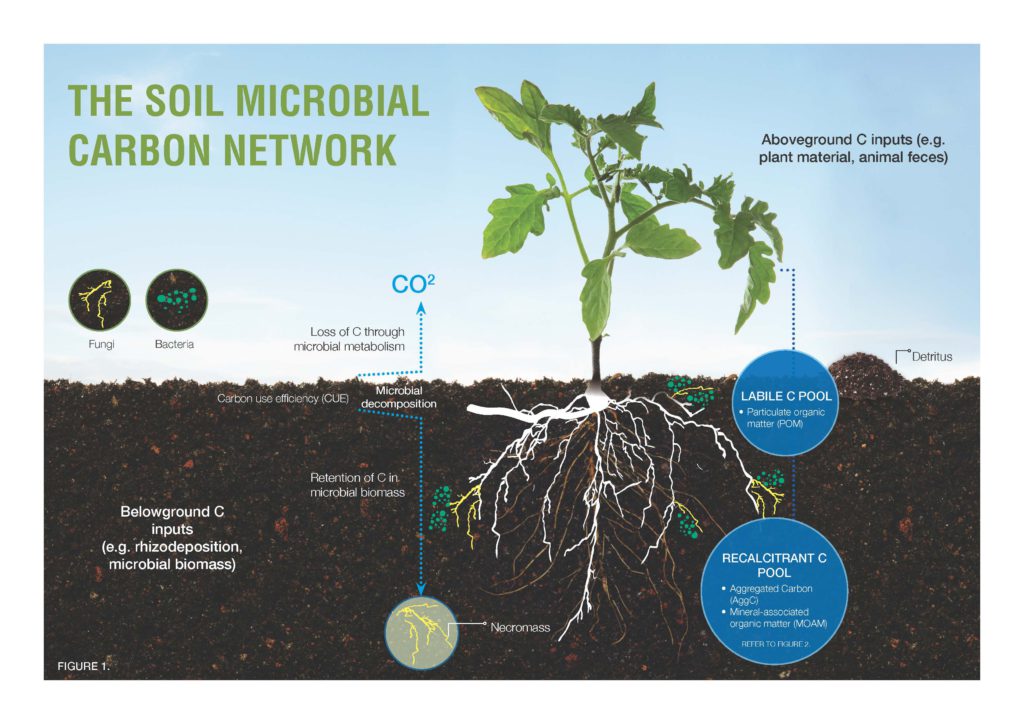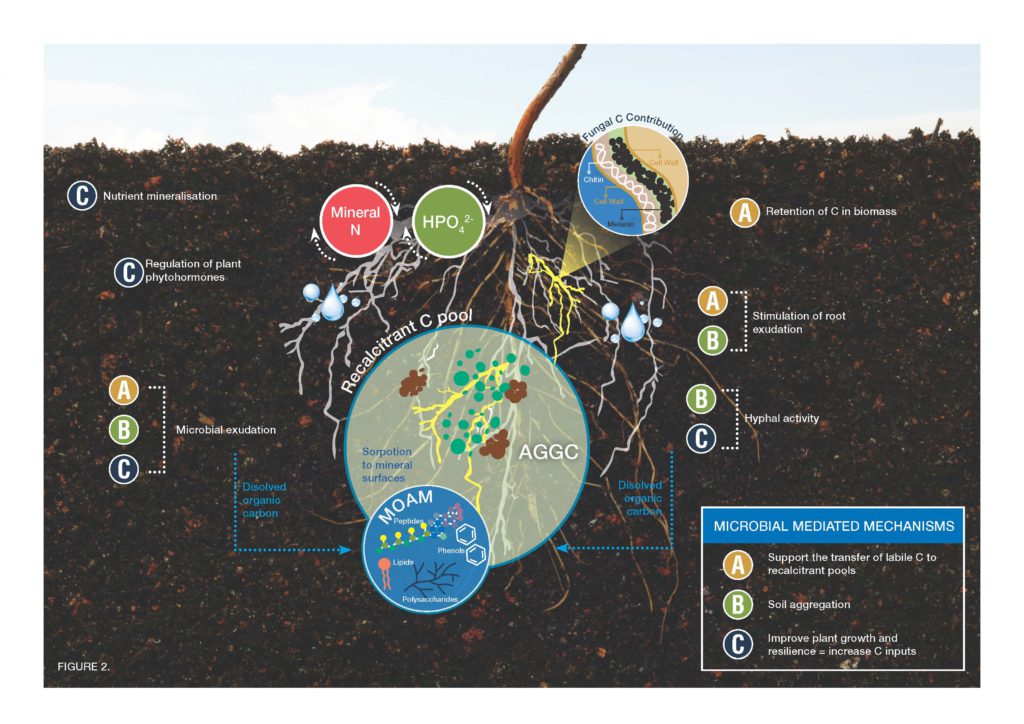Microbial solutions to soil carbon sequestration
The potential of soil to capture and store carbon dioxide (CO2), known as carbon sequestration, has been proposed as a compelling mitigation strategy to help address climate change.
Agriculture is the primary supervisor and benefactor of global soil carbon stocks. It has an important role to play in developing practices that reduce the physical disturbance of soils (e.g no-till farming) and that increase the amount of carbon entering these systems (e.g retaining plant cover and composting). There is little doubt that these practices can assist in building soil carbon, what is less certain is the longevity of its storage. This is crucial if soil carbon sequestration is to have a meaningful impact on climate change.

Soil microbes may hold part of the solution to this challenge through their contributions to the soil carbon cycle. It is estimated that plants send roughly 13 Gt of CO2 (equivalent), ∼36% of annual global, below-ground to their fungal partners annually. Understanding how these microbes manage this carbon, and the role they play in its stabilisation, will aid in attempts to utilise these organisms to build and maintain soil carbon, for financial, production and environmental benefit.

In a recent review published in the Journal of Cleaner Production, Environment Institute researchers and colleagues characterised the key microbial traits and mechanisms involved in soil carbon cycling, and identified the microbial groups that could be used. Of the many microbial groups identified, the authors highlighted:
- the capacity of arbuscular mycorrhizal fungi to convert carbon from short-lived (labile carbon pools) to long-lived carbon (recalcitrant carbon pools);
- melanising endophytic fungi as a potential source of recalcitrant soil carbon;
- plant growth promoting bacteria as stimulators of plant growth/reliance and thus carbon entering the soil carbon pool; and
- the ‘biochar + microbe system’, where biochar may act to improve microbia, as a potential avenue to overcoming soil carbon saturation limitations and as a practice to support sustainable production.
The ability of soil microorganism to assist in the sequestration and retention of soil carbon appears a promising climate change mitigation strategy. This research provides further impetus for the development of microbial inoculants with this express objective, whilst adding to the growing body of literature emphasising the importance of managing soil biology as a sustainable production tool.
Further Reading: Mason, A.R.G., Salomon, M.J., Lowe, A.J. and Cavagnaro, T.R. (2023). Microbial solutions to soil carbon sequestration. Journal of Cleaner Production, [online] 417, p.137993. doi:https://doi.org/10.1016/j.jclepro.2023.137993.

Newsletter & social media
Join us for a sensational mix of news, events and research at the Environment Institute. Find out about new initiatives and share with your friends what's happening.
